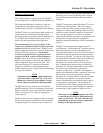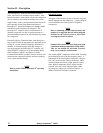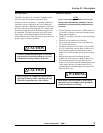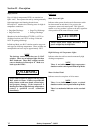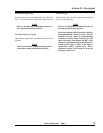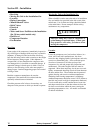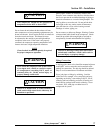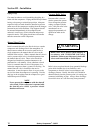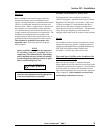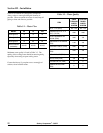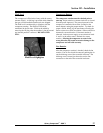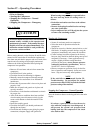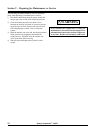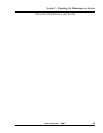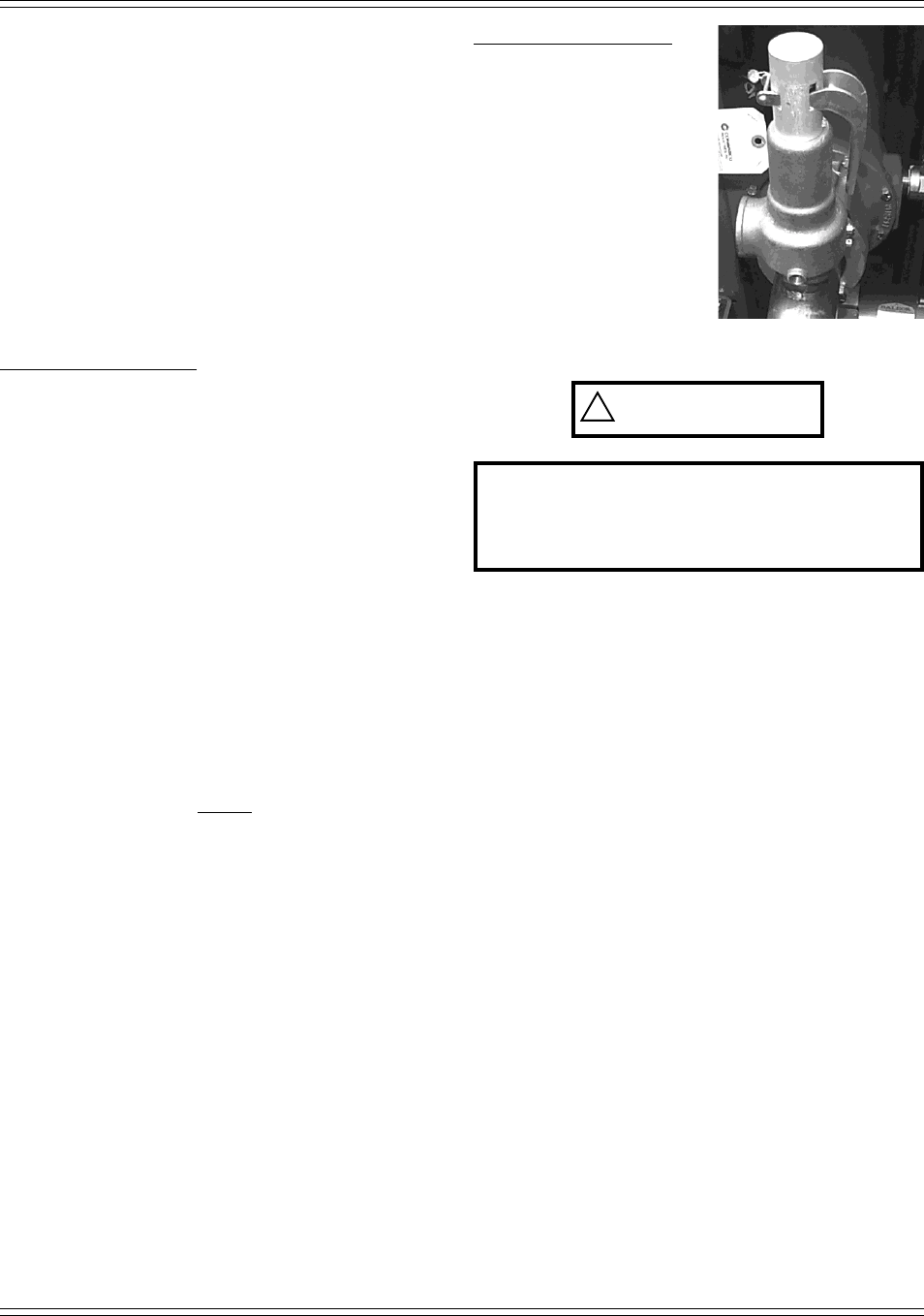
Section III - Installation
18 Quincy Compressor
®
- QSD™
Piping Fit-up
Care must be taken to avoid assembling the piping in a
strain with the compressor. Piping should line up without
having to be sprung or twisted into position. Adequate
expansion loops or bends should be installed to prevent
undue stress at the compressor resulting from the changes
between hot and cold conditions. Pipe supports should
be mounted independently of the compressor and
anchored, as necessary, to limit vibration and prevent
expansion strains. The piping should never be smaller
than the connection on the compressor.
Manual Shutoff Valve
Install a manual shut-off valve (block valve) to vent the
compressor and discharge line to the atmosphere. In
those instances where the air receiver tank services a
single compressor, the manual shut-off valve can be
installed in the receiver. When a manual shut-off valve is
used, a pressure relief valve is installed upstream from
the manual shut-off valve. These valves should be
designed and installed to permit maintenance to be
performed in a safe manner. Never substitute a check
valve for a manual shut-off valve if the purpose is to
isolate the compressor from a system for servicing. If a
manual shut-off valve is installed at the service
connection, it must be open to allow air to pass to the
service line when the compressor is operating. Provide
drip legs in the air piping from the compressor as good
installation practices dictate.
NOTE
Never operate the compressor with the shut-off
valve closed. If the compressor is operated with
the shut-off valve closed, a pressure related
shutdown will occur.
Pressure Relief Valves
Pressure relief valves are
sized to protect the system.
Never change the pressure
setting or tamper with the
valve. Only the relief valve
manufacturer or an
approved representative is
qualified to make such a
change.
Relief valves are to protect system integrity in
accordance with ANSI/ASME B19 safety
standards. Failure to provide properly sized relief
valves could cause death or serious injury.
Relief valves are placed ahead of any potential blockage
point which includes, but is not limited to, such
components as shut-off valves, heat exchangers, and
discharge silencers. Ideally, the relief valve should be
threaded directly into the pressure point it is sensing, not
connected with tubing or pipe. Always direct discharge
from relief valves to a safe area away from personnel.
!
WARNING




